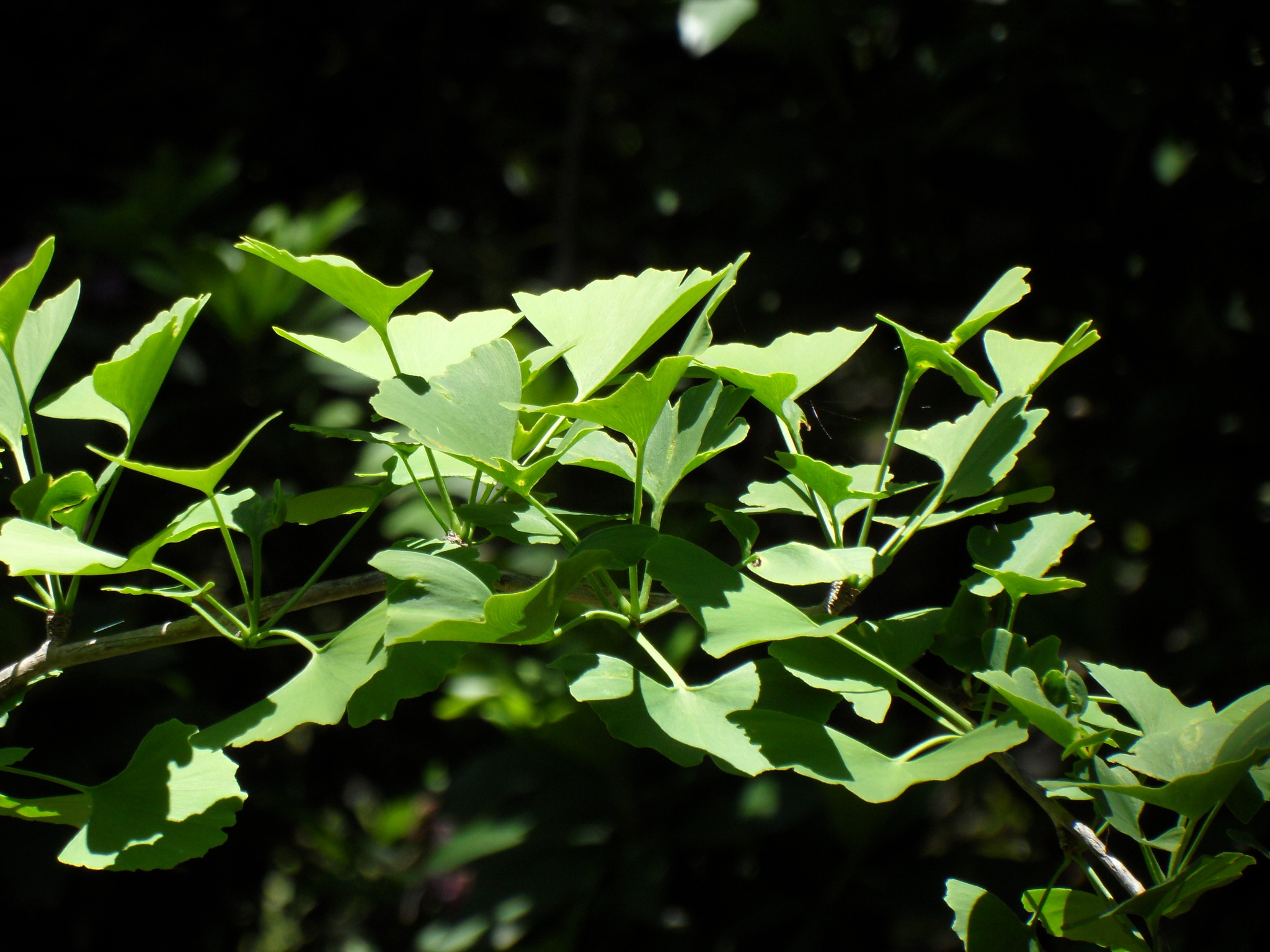
A rounded to conical tree growing to 30 m or so tall in nature but smaller in cultivation. Bark smooth, grey-brown. Buds small, pointed, with a few scales. Leaves deciduous, mostly clustered on spur-like short shoots, 6-10 cm broad, long-stalked and variously divided at the tip into two fan-like lobes with numerous parallel veins radiating from the base; bright yellow in autumn. There are separate male and female plants. Male catkins pendulous, to 5 cm or more long. Female fruit orange-yellow, plum-like, ovoid, surrounding 2 ovules (naked at first), one of which develops into a thin-shelled nut to 2 cm wide. Grows well in south-eastern Australia where it is quite common in parks and gardens and occasionally used as a street tree.
The common name, Maidenhair Tree, refers to the similarity of the leaves to those of the Maidenhair Fern, Adiantum.
Female trees are rarely grown because of the foul-smelling flesh of the fruits containing butyric acid which smells of rancid butter, although the first fruits may not be produced for 20 years.
It is not possible to distinguish the male and female plants vegetatively although the two sexes are supposed to shed old leaves and open new ones at slightly different times of the year.
Origin Uncertain.
Seed (stratified), layers or cuttings. Cultivars are budded or grafted.
various leaf extracts have been used medicinally for a range of ailments. The sweet and edible nut kernels are delicious when boiled or roasted and a popular Asian food that may be bought tinned in Australia.
Leaves fan-shaped, deciduous, two-lobed, with radiating veins.
Barkley (1944).
SA: Mt Gambier ('Barn Palais', Nelson Rd). NSW: Armidale (University of New England car park; 'Saumars'); Orange (Bloomfield Hospital Entrance opp. post office, 6 mature trees, male and female; Cook Park); Tamworth (Back of Brisbane St, 14 m in 1992, 90 years old). ACT: Barton (Brisbane Ave., Australian Federal Police College); ANU (University House Courtyard, ptd 1955). VIC: Dandenongs (Alfred Nicholas Memorial Gardens. 6 mature trees, 1 female, growing around the lake); Geelong Botanic Gardens (finest specimen in Victoria, and probably Australia, grown from seed obtained in 1859 and now a mature tree 18 m tall with aerial roots (see Jones (1988)); Kyneton (Bot. Gds); Melbourne (Flagstaff Gds; Royal Bot. Gds, Magnolia Bed); Parkville (Melbourne University, male and female trees on opposite sides of entrance to the old Geology building); Bogong township (by Lake).
Source: (1995). Ginkgoaceae. In: . Horticultural Flora of South-eastern Australia. Volume 1, Ferns, conifers & their allies. The identification of garden and cultivated plants. University of New South Wales Press.

A male clone with an oval, upright canopy. From a selection made in San José, California, USA in 1957.
Narrow form with upright branches; has been trialled as a street tree in some areas. Origin unknown.
Vic: Hawthorn (Scotch College); Melbourne (Royal Bot. Gds, Viburnum Bed, Tennyson Lawn); NSW: Sydney (Royal Bot. Gds).
Leaves large and deeply dissected with many incisions; veins raised. Arose as seedling pre- 1850 in Reynier Nursery, Avignon, France.
Branches weeping. Origin unknown.
Branching and foliage dense; leaves narrow and elongated; male clone. Saratoga Horticultural Foundation, USA.
Slow growing with the leaves curled into tubes. Origin unknown, name probably illegitimate.
Leaves striped with yellow and green, sometimes virtually pure yellow. Arose as seedling in the m.a. Leroy Nursery, Angers, France.